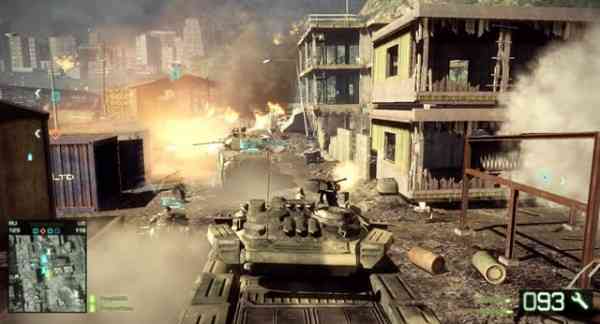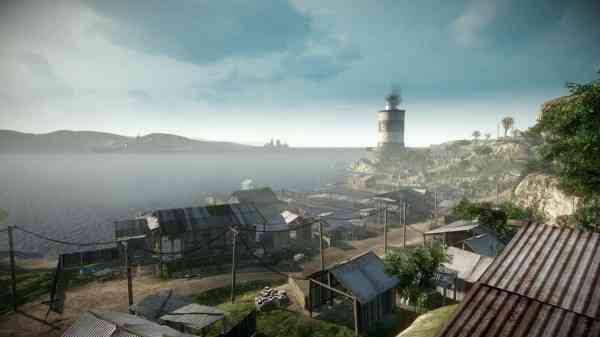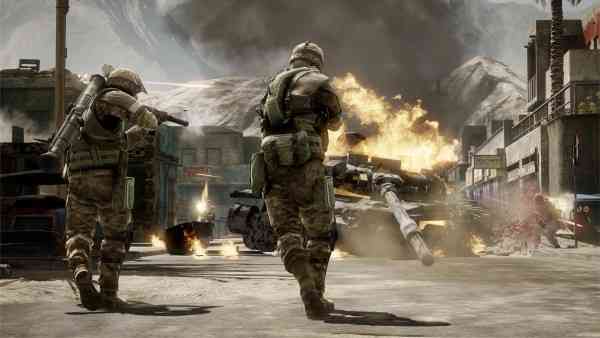It seems rather ridiculous doesn’t it? I mean, DICE made the game. How can they not know what made it so special? They should know exactly what made it fantastic. Apparently they don’t know the answer. After some reflection, a part of me can see where they are coming from.
The Bad Company games were meant to be little spin-off titles, where DICE could experiment with their new engine and steadily test it before tackling the main Battlefield games. But then, Bad Company 2 ended up being one of their highest rated and bestselling games.
Their next entry in the series was hyped to the moon with aggressive marketing and gorgeous looking trailers. After the success of Bad Company 2, EA decided that Battlefield 3 was going to be their cannon to go up against Call of Duty.
Battlefield 3 met with huge sales and critical acclaim, despite criticism for the game’s weak single player campaign. Same goes for Battlefield 4; huge sales and critical acclaim… so why do fans still talk about Bad Company 2?
On paper, it doesn’t make a whole lot of sense. Battlefield 4 has more realistic graphics, more weapons and vehicles, more expansions, more players and a more serious campaign… so again, why do gamers go on about Bad Company 2? I have some answers to that question. So without further delay here’s why I think Bad Company 2 was the high point of the series.
Destruction
The Frostbite engine has gone from DICE’s in-house project to being the definitive toolkit for EA developers. Frostbite 3 alone powers Battlefield 4, Need for Speed: Rivals and Plants vs Zombies: Garden Warfare. It’s also set to power Dragon Age: Inquisition, Battlefield: Hardline, EA Sports: PGA Tour, Star Wars Battlefront, Mass Effect 4 and the new Mirrors Edge. Yet, people often say that Bad Company 2’s destruction is better.
The thing is, despite lacking graphical set pieces like that building collapse on Siege of Shanghai, it is better than Battlefield 3 and 4. For one simple reason, because it directly affects gameplay. Bad Company 2 only had a few building structures in its world editor, meaning that maps in completely different locals often reused assets. The upside is that the large majority of these buildings could be leveled completely.
Three of the four classes (by default) had an explosive that could destroy an entire wall with just one hit. Yet, despite being this fragile, buildings still played a big part in team strategy. Cover is invaluable, as this is the kind of game where standing out in the open is ill-advised. This is where the depth and tension comes from.
Imagine this. You’re playing a game of rush and you’re next to the building that contains the objective. Rather than going through the door on the other side where you may be shot at, you instead blow up the wall on your side. This gives you a quick entrance into the building and allows you to plant the explosive charge.
If you are successful with your attack, it’s all fine. However, if you get killed and the bomb is defused, getting in there a second time is going to be all that more challenging, because you’ve created a new area where you will be exposed when planting the charge.
Nearly everything you do in Bad Company 2 will either give you the edge in combat or be your team’s demise and it’s this decision making that you don’t see in the following games.
There’s a lot more camping in Battlefield 3 and 4, many more zones that when controlled, give you the upper hand in combat. Bad Company 2 rewarded squads that were constantly on the move and punished those that didn’t.
This is not to say that the destruction in Battlefield 3 and 4 isn’t technically impressive or that it has no impact on gameplay. But the effects aren’t as noticeable and the destruction itself is less immediate and satisfying. There’s also the talk of consistency.
In every map in Bad Company 2, I know what can be blown up and what is required to blow it up. Every time I take out my grenade launcher and aim it at a wall, I know for a fact that it will be destroyed. Battlefield 3 and 4 don’t have that built up trust in their gameplay.
This results in both games having graphics that look great… but don’t really do much else. When I think of BF3’s destruction, I think of 64 players spamming grenades down a corridor. When I think of Bad Company 2’s destruction, I think of intelligent gameplay that forces you to think in a way few shooters do.
Maps
About the only downside with Bad Company 2’s map selection is the lack of urban environments. Every other type is there though. Desert, Snow, Jungle, big, open, small, close quarters, it’s got it all. Not only that but the flow of the gameplay and depth we talked about before, really adds to the excitement of playing these levels.
They perfectly fit the player cap whether it’s 24 on consoles or 32 people on PC. While I do still love playing Battlefield 3 and 4 with their huge 64 player matches, it’s not really anymore “epic” than Bad Company 2 and here’s why.
The 360 and PS3 versions of Battlefield 3 and 4 are less fun than PC, not because of the reduced player cap, it’s because those smaller versions of levels are after thoughts. They feel reduced. Bad Company 2’s maps don’t feel reduced at all, they feel just right.
Despite the fact it has a smaller player count and environments that aren’t as huge, it’s more exciting to play because of the level design and intense gameplay. Battlefield 4’s abundance of squad options, Commander Mode, weapon categories, vehicles and sprawling levels don’t actually add anything.
Close matches and intense moments that got my heart going were far more frequent in Bad Company 2 than with the main numbered games. The levels combined with the player cap, classes and gameplay are the reason for that.
Simplicity
When a developer finds themselves removing things rather than adding them, it’s usually in the name of “streamlining”. In most cases, all it really does is dumb down the gameplay and turn it into something less compelling.
Bad Company 2 does not suffer from this. On the surface, it does have many features removed from previous games. Battlefield 2 had seven classes and 64 player servers. Bad Company 2 has four classes and (PC) 32 player servers, yet “dumbed down” is not what I would use to describe this game.
Everything that was removed and simplified was done in the name of fluidity and removing elements that were needlessly complex. As previously mentioned, the lower player count didn’t make the game less exciting. If anything, because there were fewer squads on a field, the importance of each squad was amplified. One fire-team of four could turn the tide if they were skilled enough. This is something that doesn’t happen to the same degree when you’re playing on a 64 player match on Battlefield 4.
The number of weapons, specializations and vehicles are not as great as in later games, but nearly every single one serves a purpose. Each weapon feels unique, not a slight variation of another model. It’s quality over quantity.
Final Note
In fact, that sort of describes Bad Company 2 as a whole. It didn’t have the hype, budget or scale of later entries, but in many ways, that’s what made it great. All of the wires crossed together in the right places to make it work. The gameplay is simplified without dumbing down the experience. It’s an explosion filled romp across a battlefield with many strategic opportunities.
It’s a big dumb shooter that respects the player’s intelligence without bombarding them with needlessly complicated gameplay. It extracts the most amount of depth from the smallest amount of complexity.
Apart from all that, it’s just a brilliantly crafted game that to this day, holds up as some of the best multiplayer ever made. So, DICE, in the unlikely event that one of your employees is actually reading this, I wanted to say something.
As a fan that’s been playing all of your games since I was ten years old, I really hope that I’ve given you some insight as to why myself and millions of other people love this game so much.




